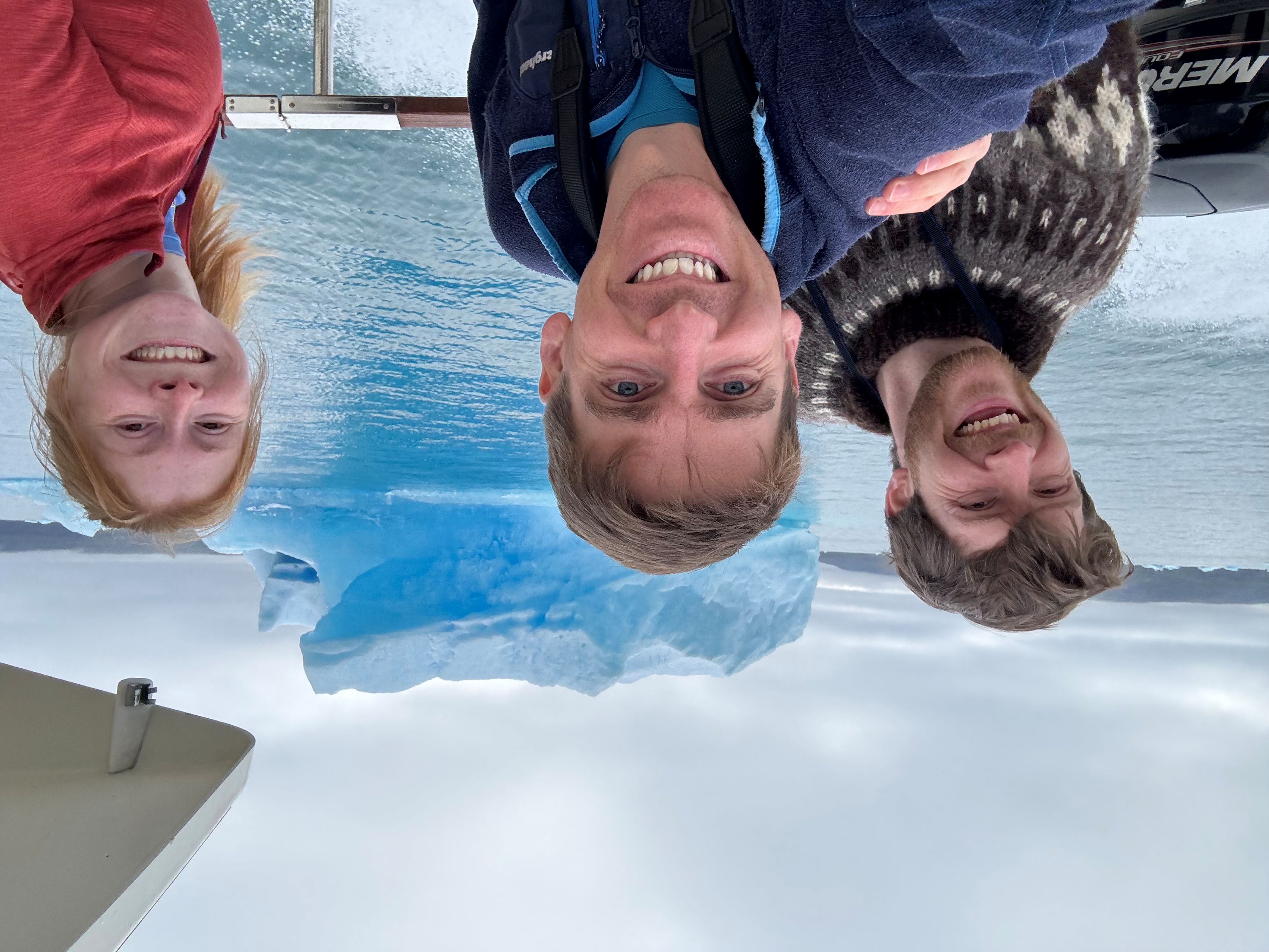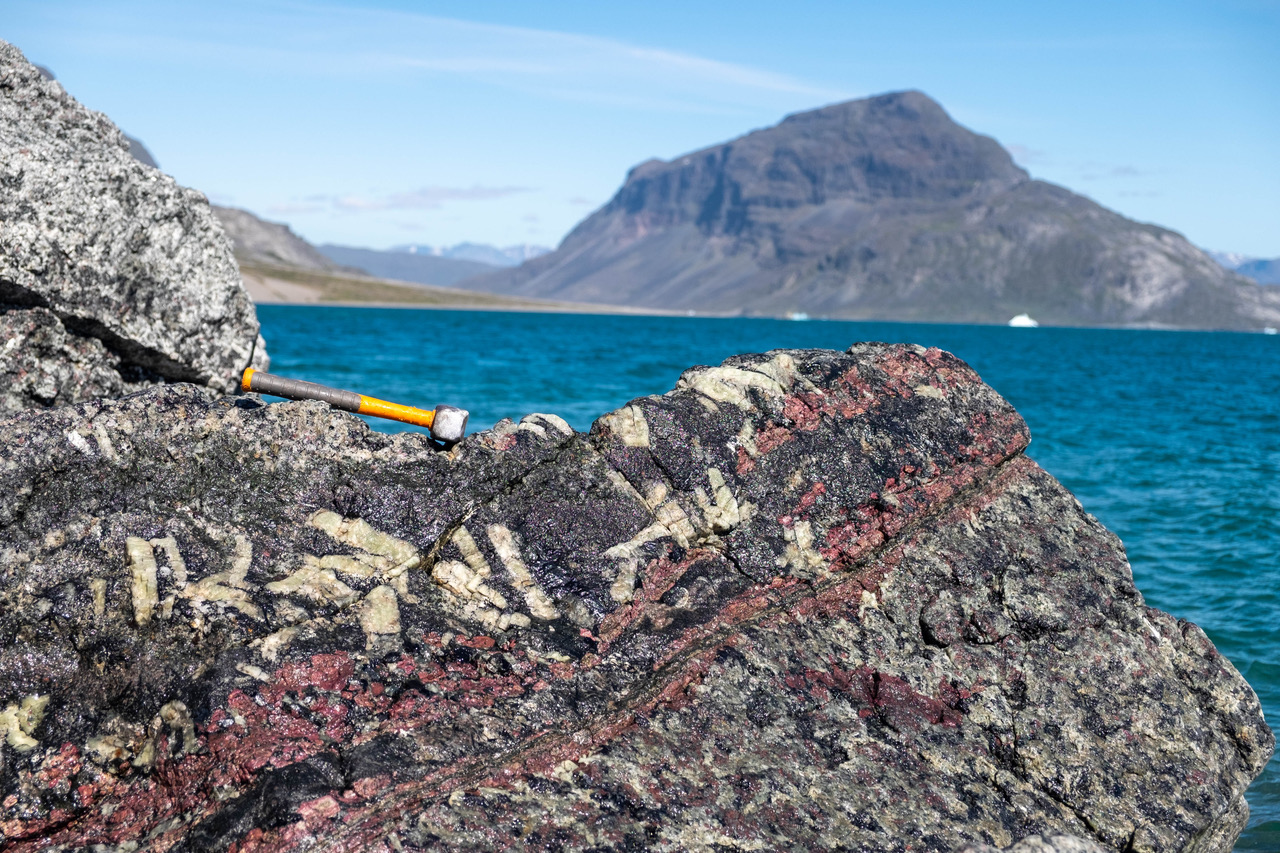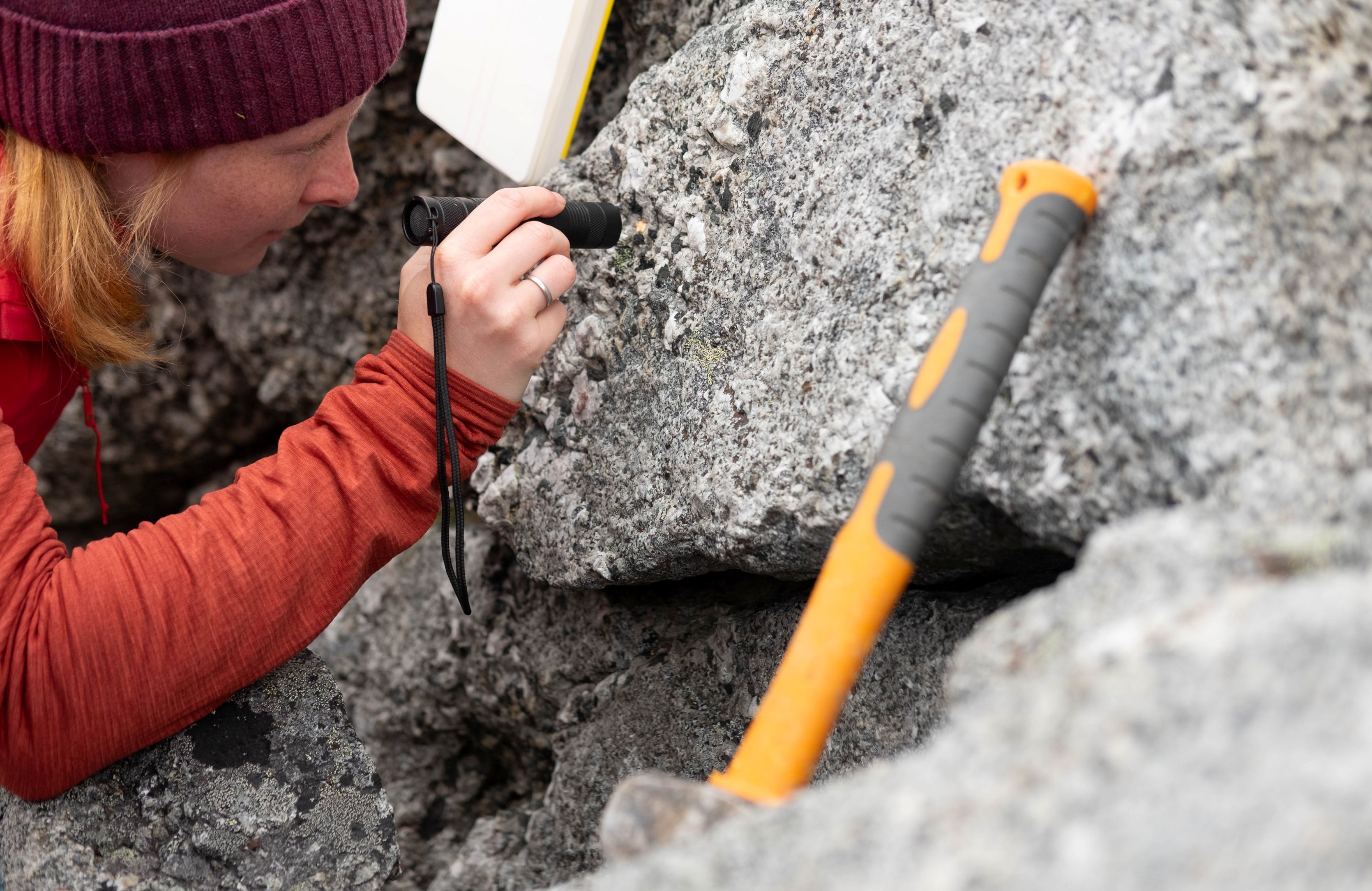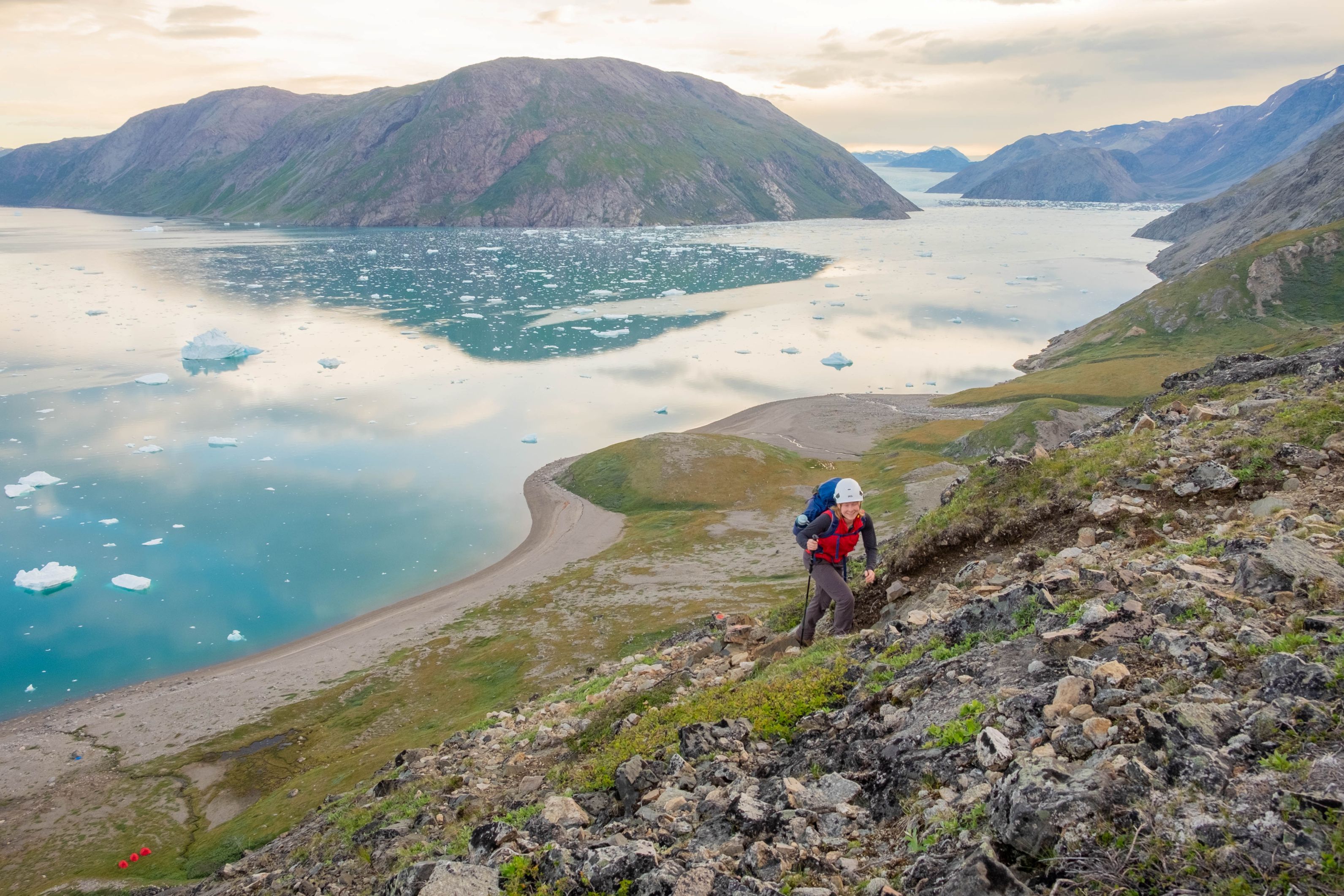This summer Carrie Soderman, Owen Weller and Charlie Beard headed to Greenland to investigate how metals critical for green technologies form.
Rare earth elements (REEs) are classed as ‘critical metals’ in modern society, meaning a group of metals and minerals that cannot be easily substituted in technology but whose supply is at risk. In particular, the REEs are a vital part of green energy transition technologies, such as the magnets that go inside motors for wind turbines and electric vehicles. Demand for these elements is therefore expected to increase rapidly in the coming decades.
Alkaline igneous rocks are an important natural host of REEs, but these rocks are poorly understood. One major question is why some alkaline intrusions contain REE minerals, yet other seemingly similar complexes are barren. Our research group in Cambridge is trying to understand what controls magmatic enrichment of critical metals by applying a new modelling toolkit to case studies around the world. Our approach can be both predictive (indicating where maximum REE enrichment might occur in igneous systems) and inverse (explaining REE enrichment once observed in a system).
As part of this project, this summer our group ventured to the southern tip of Greenland to collect samples and make field observations. Here, a 1.2-billion-year-old failed continental rift caused the intrusion of several alkaline igneous complexes. These complexes include the world-famous REE-mineralised Ilimmaasaq intrusion, which sits only kilometres away from unmineralized intrusions such as Illerfissalik.
We spent three weeks looking at these contrasting intrusions, collecting 150kg of samples, eating a variety of canned food shipped from the UK several months earlier (none of us want to see corned beef again for a while), and wondering if every white animal we saw in the distance was a sheep or a polar bear (and whether we needed to put our new rifle-shooting skills to the test!).

Our first campsite was on the eastern edge of Ilimmaasaq, a boat trip away from the town of Narsarsuaq where our flight landed. We spent five nights here, examining the margin of the intrusion where it meets country-rock quartzite and sampling the main lithologies of the intrusion.

The rocks here are amazingly unique: sodalite float cumulates that fluoresce bright orange under UV light and stretch over kilometres; 20-cm-long crystals of Na-rich amphibole, pyroxene and feldspar in pegmatite veins seemingly around every corner; and layers of the deep red REE-bearing mineral, eudialyte.
The views were equally spectacular, with ascents up rocky slopes rewarded by stunning views down into the iceberg-filled fjord below. The fjord is called Eriksfjord, as supposedly this is where Erik the Red settled when he arrived in 983 AD.



As there is no road network in Greenland, we were then collected by boat to move onto our second base, the town of Narsaq, where the roof zone of the Ilimmaasaq complex is exposed and the most unusual, evolved mineralogy is found.
The Ilimmaasaq area hosted a former uranium mine and its rocks, which are rich in REEs, are currently prospective for a REE mine. Ilimmaasaq is also a mecca for mineral collectors because it is the type locality of over 30 minerals, with around 15 undocumented elsewhere on Earth.
We spent some time looking for these extremely alkali-rich minerals amongst the spoil heaps of the old mine, as well as for the national mineral of Greenland called ‘tugtupite’. Tugtupite is a raspberry pink Be-bearing sodalite-group mineral that not only fluoresces but also temporarily changes colour to a dark pink after a dose of UV light!
From this base we also looked at some other intrusions on islands to the west, including a dyke full of mantle xenoliths and a ‘giant dyke’ complex that is thought to represent the precursor melts to the alkaline complexes in the region.
For our final week we headed back up the fjord to Illerfissalik, a syenitic intrusion with the highest peak in the region at 1752m. Our campsite here was the best of the trip, sitting on the coast next to a terminal moraine that traps icebergs coming off the glacier, yielding an ever-changing display of icebergs creaking, rolling and splitting.

Getting up to the exposed intrusion each day from our campsite required a vertiginous climb onto the plateau, but once up there we were treated to a variety of syenites, spectacular alteration (‘fenitisation’) of the surrounding quartzites, and an array of pegmatites and veins.
On our final day in the field, we hiked up to the top of the mountain, a roughly 12-hour, 20 km round trip with incredible views to the inland Greenland icecap and a very satisfying sample locale at the top.

After we had been collected by boat for the final time, thanks to the wonderful Blue Ice Explorers who handled all our transport, we headed back to Narsarsuaq for a few days to allow for our sample export permits to be processed, and carefully pack and wrap our pallet of rocks ready for shipment.
We’re expecting the rocks in Cambridge in the next couple of weeks, and we hope that by applying our new phase equilibria modelling approach we will determine magmatic processes that lead to critical metal enrichment in these alkaline-silicate systems.
Read more about the group’s research here:
Weller et al., New thermodynamic models for anhydrous alkaline-silicate magmatic systems, Journal of Petrology (2024) https://doi.org/10.1093/petrology/egae098


